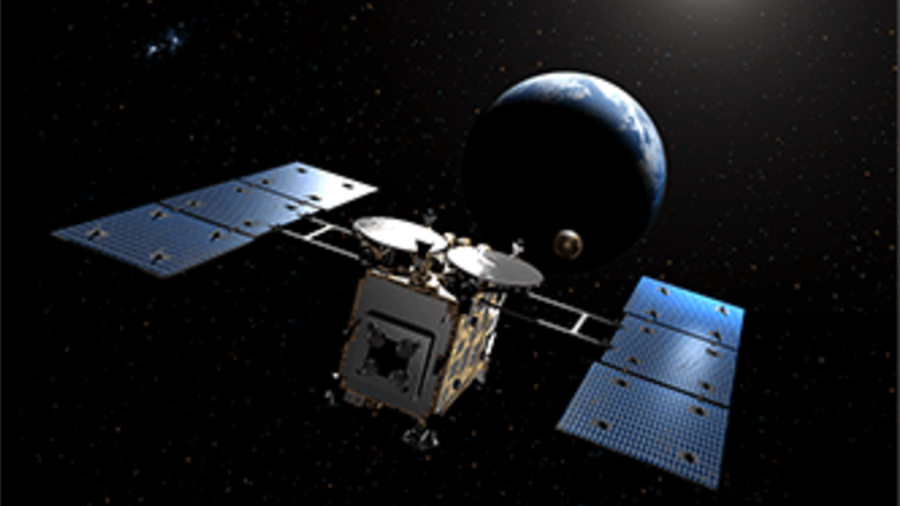Signs of life? Japanese spacecraft to probe water-rich asteroid in groundbreaking study

A Japanese space probe has completed its three-year journey to the Ryugu asteroid, hundreds of millions of kilometers from Earth – on a mission to discover the origins of life.
READ MORE: Culprit in decades-old lunar mystery finally found through lost Apollo tapes
The Hayabusa2 spacecraft is now in orbit around the asteroid after arriving at its destination on Wednesday, according to the Japan Aerospace Exploration Agency (JAXA). The agency plans to make three landings onto the surface of Ryugu over the next 18 months, collecting mineral samples and measuring surface conditions. Hayabusa, which is Japanese for “peregrine falcon,” is due to return to Earth with its cache of samples in November 2020.
We have imaged asteroid Ryugu from a distance of about 40 km. Details of the asteroid surface are now clear, giving food for thought about the best locations for surface operations. https://t.co/y1gmpPYHbUpic.twitter.com/lEspwujMpp
— HAYABUSA2@JAXA (@haya2e_jaxa) June 25, 2018
READ MORE: NASA mission prepares to slingshot asteroid probe around the Earth
“Ryugu is scientifically surprising and at the same time has a challenging engineering challenge,” Project Manager Yuichi Tsuda said in a blog post. “The project team is fascinated by the appearance of this Ryugou and the morale is rising to try to challenge this.”
Named after a sea-dwelling dragon palace from a Japanese fairytale, Ryugu is thought to contain significant amounts of water which could possibly support life. The asteroid travels around the sun once every 16 months. It’s hoped the rock samples could give scientists some insight into the origins of life in the universe.
Landings are planned for September as well as February and April next year. Hayabusa2 is equipped with a copper bolt capable of pounding a new crater in the surface. It will the deploy three small rovers to collect samples of subsurface rock unearthed by the bolt.
READ MORE: Cosmic fender-bender: NASA’s asteroid-hunting probe develops mysterious dent (PHOTO)
Launched in December 2014 from Tanegashima, Japan, the 600kg spacecraft is the second Hayabusa space probe to be launched into the cosmos. The original Hayabusa endured a haphazard mission to the surface of the Itokawa asteroid in 2003. It was plagued by technical glitches before eventually returning to Earth with the world’s first ever asteroid rock samples in 2010.
Think your friends would be interested? Share this story!














